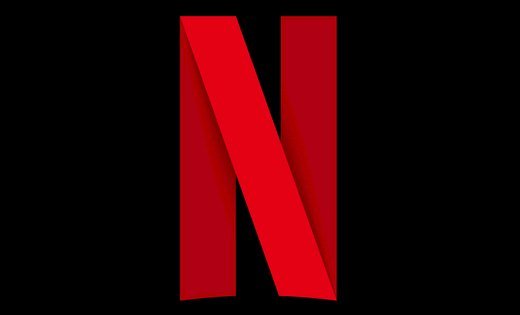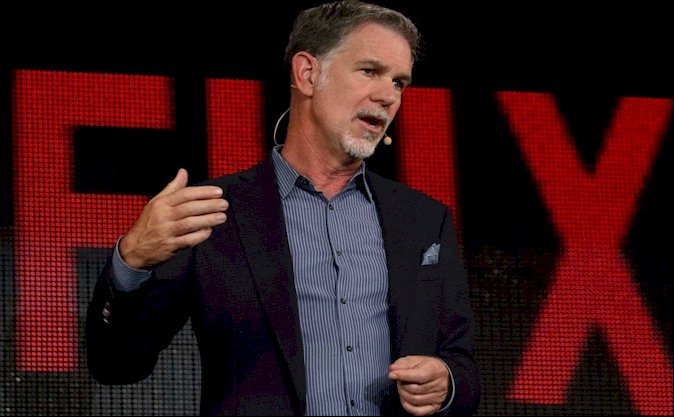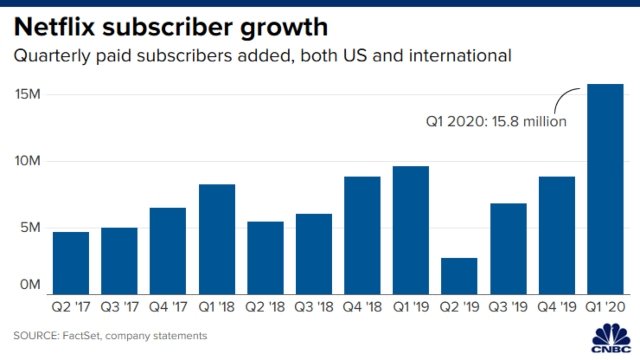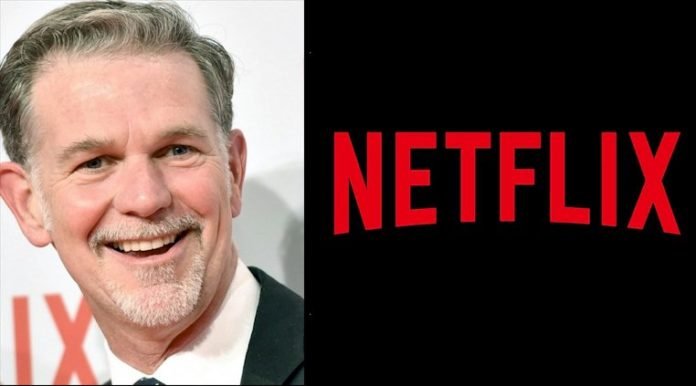This is a look at the Netflix Logo and some history behind this huge media company.
The Netflix logo has changed a few times over the years. Here is the evolution of the Netflix logo. The logo from 1997 to 2000 is the first logo designed. It has a theatre look and feel to it because of the movie reel. In 2000 the logo was simplified with just letters and a shadow behind the word NETFLIX. In 2014 it was redesigned with a more bold look and no shadow.
Netflix once again felt the need to make changes to their logo. Because of social media and the rapid growth of streaming videos and TV, Netflix had to come up with a short and simple version of their brand that looks good on every device. Here is the Netflix icon.
Time and time again, the phrase, ‘Necessity is the mother of invention,’ has proven to be true. With the internet as a tool, it’s clear that any good idea has the potential to break the status quo.
Great companies have exciting stories about the origin of their ideas. These tales sometimes come from a moment of displeasure or challenges. Let’s take a look at two companies and their moment of triumph. Remember, not your usual story of the giants – Apple, Google, Amazon, etc.
Fattmerchant, a subscription-based merchant company, founded by Suneera Madhani, was born out of her frustration to stand the deceit and high charges offered to business owners in the financial sector. She complained to her boss, who only laughed and ignored her sentiment.
In 2013, Daniel Kane founded the Ridge Wallet with his father. His moment of inspiration came when he was upset with carrying a bulky wallet in his back pocket. He makes the wallet from aluminum, carbon fiber, and titanium. It weighs two ounces and holds no more than 12 cards and some cash.
People love stories.
So, what is the story behind Netflix, the world’s leading internet streaming service?
Some people claimed Hastings got the idea of Netflix after Blockbuster, the king of home entertainment rentals at the time, charged him a $40 late fee for Apollo 13. Though emotionally connected, this story is untrue.
The History Of Netflix
Let’s meet the founders who disrupted the dominance of Blockbuster with their innovative business models. Without much ado, I present to you, Reed and Marc.

Reed Hastings is a graduate of Bowdoin College, where he obtained his Bachelor of Arts Degree in 1983. Five years later, he received his Master’s Degree in Computer Science from Stanford University. In 1991, he founded a start-up called Pure Atria, a software start-up that produced tools for software developers. Rational Software Corporation acquired the company in 1997 for $700 million.
Marc Randolph graduated from Hamilton College with a Degree in Geology. He gained extensive knowledge from his previous mail-order and direct-to-customer businesses. Magazine Macworld was one of his start-ups, and he has mentored many aspiring entrepreneurs.
After brainstorming on different business ideas, Marc and Reed finally settled on what to serve their target market – movie rental services. This decision led to the birth of Netflix, initially called Kibble, in August 1997 in Scotts Valley, California.
To test the effectiveness of their business model, they posted DVDs to their homes. After the packages arrived without any hitch, Reed and Marc were ready to hit the market with their product. Netflix, in 1998, became the first online DVD rental company in the world. With few workers and about 900 movie titles, the business began.
 From its website, customers will place orders for movies and received them in their posts. After watching the movies, they will return them in an envelope provided to them. A single rental film costs $6 with postage charges inclusive.
From its website, customers will place orders for movies and received them in their posts. After watching the movies, they will return them in an envelope provided to them. A single rental film costs $6 with postage charges inclusive.
A year later, and after achieving much growth, the company introduces the subscription model. With this model, customers are offered unlimited DVD rentals for a low monthly payment. The charge was $15.95, allowing customers to rent up to 4 movies at a time with no deadline.
Netflix introduced CineMatch in the year 2000 – a system that uses a five-star rating scale of about 20 movies to recommend movie titles to customers with similar tastes and preferences. The information gathered from the rating is shared with studio directors to help them plan effective marketing campaigns. The same year, the company signed a revenue-sharing deal with Columbia Tri-Star and Warner Home Video.
In 2001, Netflix got extra funding from a Venture Capitalist to expand its activities. Also, with a subscriber-based predicted to reach 500,000, the company started offering a free six-week trial membership through the Internet Movie Database.
With about 600,000 subscribers, Netflix filed its Initial Public Offering (IPO) in 2002. Initially, the company offered 5.5 million shares for sale. The cost per share was $15. The company raised $82.5 million, an unprecedented amount aimed at paying off an outstanding debt of $14.1 million and also using part to cover promotional expenditures. The company modified its name to Netflix, Inc.
After this successful Initial Public Offering (IPO), Netflix’s membership skyrocketed. The company had about a million subscribers in 2003, 2 million subscribers in 2004, 4.2 million subscribers in 2005, and 6.3 million subscribers in 2006. These numbers are staggering for a company yet to celebrate its tenth anniversary.
In 2007, Netflix launched its streaming service with 1000 titles. It was called Watch Now. This innovative service offers subscribers the freedom to stream live movies on their computers or any web-enabled device. Not long, independent movie producers started streaming their content on Netflix.
Netflix hits a record 9.4 million and 12 million subscribers in 2008 and 2009, respectively. The company signed a partnership deal with Microsoft and Sony to have its content streamed on their devices such as Xbox 360, Blu-ray disc player, and PS3. It was an incredible milestone.
In 2010, Netflix extended its services to Canada. In the same year, it partnered with Apple to have its streaming content on iPad, iPhone, and the iPod Touch. The company’s subscription increased to 20 million at the end of that year.
From 2011 to 2015, Netflix continued its hard work by improving, innovating, and expanding into other countries. Among these countries were the United Kingdom, Ireland, Austria, Belgium, France, and Germany. The company won seven creative Emmy Awards in 2014 for its meritorious works.
In 2016, Netflix introduced a downloadable feature to its services to allow users to download content for offline viewing. Also, the company reached 190 countries with 21 languages in the same year.
The company is showing no signs of fatigue as they continued to dominate their chosen field. For receiving 160 nominations for the 72nd Primetime Emmy Awards, 2020, indicate Netflix is not relenting on its past glories.
Netflix has produced and premiered some of the best movies in the industry. Few include the Platform, the Wrong Missy, Triple Frontier, the Irishman, the Old Guard, and Murder Mystery.
More On The Logo Evolution Of NETFLIX
 Change is the only constant in life, says Heraclitus, the Greek philosopher.
Change is the only constant in life, says Heraclitus, the Greek philosopher.
To be relevant, you must adapt to the changes in your environment. And Netflix seems to be a master of adaptation – first with its name, Kibble, which became Netflix. And secondly, with its services and logo design.
The name Netflix is a combination of two words – net (from the word internet) and flix (from the word flick, a shortened form for movie or film). So, it wasn’t surprising when the company included (.com) and a film reel on its first logo design in 1997. The film reel splits the company’s name into ‘Net’ and ‘Flix.’
In 2000, Netflix redesigned its logo. It featured a white graphique font against a solid red background. It has a convex curve around its base, and from all indications, it has a 3D appearance. This logo design became iconic.
To portray a new brand identity in 2014, Gretel, a New York-based design firm, was hired to redesign the logo. The design firm dropped the black shadow on the previous logo. The designer opted for a transparent background and a red typeface but maintained the convex curved base.
There’s a magic unfolding.
Alongside the third logo, Netflix has gone further to simplify its logo. This time, it allowed the letter ‘N’ to stand alone. With its traditional color of red, the solitary ‘N’ appears like a folded ribbon over itself. This new logo is of class and a bold move by Netflix– same font, color, and curved base.
I think we can predict the future of Netflix’s logo design.
Netflix’s Logo Design Elements

Netflix’s emblem is a well-thought design. It has employed the elements of design carefully to communicate its vision and services from the very beginning. The company’s first logo has a spiral cinema reel, a clear indication of what Netflix is offering. Also, the company included (.com) to show its use of the internet to serve its subscribers. There was a purple color that represented creativity and imagination.
The shape, color, and font choice on the second logo were also great representations of what the company stood for at the time. The rectangle communicates security, stability, and trustworthiness. This element of the design means subscribers are protected when dealing with a trusted company like Netflix.
The graphique black and white font aimed to induce a trendy and a theatrical feel. It worked to expectations. The black communicates power, elegance, and formality. In contrast, the white color represents simplicity, cleanliness, and joy. Netflix is in the business of making people happy – entertainment.
Netflix seems to love red – its dominating element of design. There must be something unique about this choice for the home entertainment pacesetters. The company used red instead of purple to make its envelopes visible in the mail. The red also projects the company to be seen as representing authority, energy, joy, and love.
The N-logo design can easily be associated with Netflix, and it’s representing the company’s connections and never-ending innovation in the home entertainment industry. Like Apple’s iconic logo, this N-logo will soon be on the minds of people when they think about movies.
The Popularity of Netflix’s Logo

Netflix is one of the most visible, acceptable, strongest, comprehensive, and influential brand identities in the world. It’s so popular it has become a household name, if not a verb for streaming services across the globe. According to Statista, an estimated 37% of the world’s internet users use Netflix.
Netflix is the world’s leading internet entertainment service, with 192.95 million subscribers who spent 125 million hours daily enjoying Netflix’s content. The range includes television series, documentaries, movies, and other entertainment content across a variety of languages and genres.
In 2013, Netflix boosted its brand identity in the minds of people. The release of ‘House of Cards,’ the company’s first original series instantly positioned Netflix as a powerhouse capable of producing its content.
Netflix’s brand has achieved a global consumer acceptance because it delivers fast, affordable, and entertaining content of quality. Also, the company offers its users a variety of titles to enjoy. The brand represents honesty, transparency, and ease of experience.
Netflix ranked as the 26th most valuable brand in the world in 2020, with a brand revenue of $20.2 billion. Forbes reported these rankings on their websites.
To build a timeless brand, learn from this wisdom: “Loyalty is not won by being first. It is won by being the best.” – Stefan Persson







